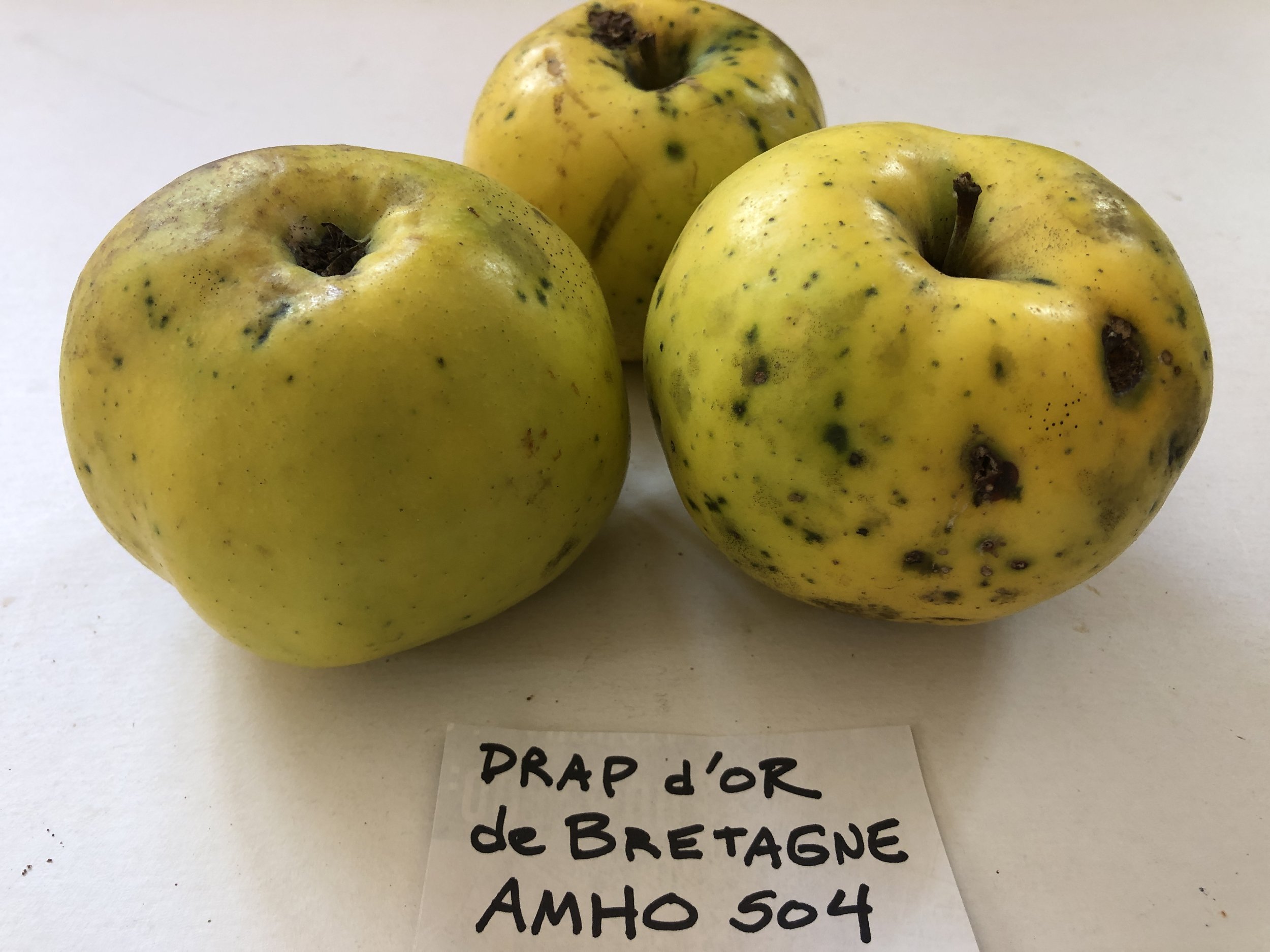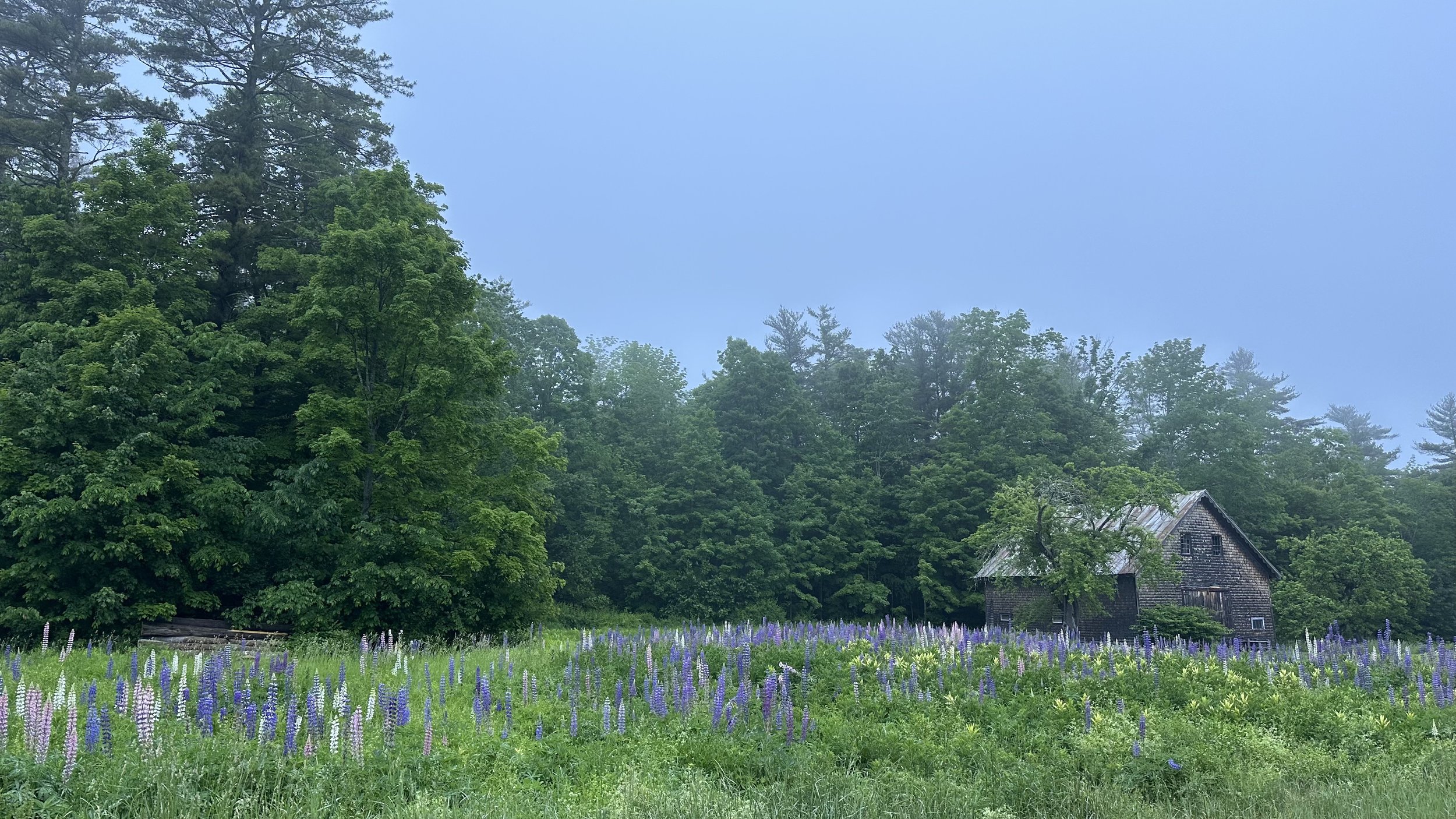Today in the orchard
Today I’m veering off into apple cultivar spelling. Recently there has been a good deal of interest in the discovery of a rare, historic, French apple on Verona Island, ME. Verona Island is at the mouth of the Penobscot River, one of Maine’s largest and most important waterways. The area was first inhabited by Europeans (French) about four hundred years ago. The apple discovery is of particular importance because it is the only tree of this cultivar ever found in North America and because it is in the ancestry of many of North America’s most well-known cultivars. The apple is called Drap d’Or (Cloth of Gold). Inconveniently there are (at least) two apples that were historically called Drap d’Or. Consequently the apple discovered in Maine has a modifier added to the end: “de Bretagne.” The name has been spelled Drap d’Or de Bretagne. But, it has also been spelled “de Bretagna” with an “a” at the end. The other well-known Drap d’Or is referred to as “Drap d’Or de Guemene. There is also a new question about “d’Or.” It appears that the correct spelling may be all lower case: “d’or”. (Please weigh it if you have opinions.)
On June 10 I received an email from Patrick Cardon, a Maine orchardist who is French and lives much of the year in France. He read about the discovery in the media. Here is what Patrick wrote to me:
“I noted that your hand-written label was correctly spelled in the use of “Bretagne.” The press however has it as “Bretagna!” Please help them get it straight because “apples to oranges”, I bet, they’ll create a bad precedent.”
This piqued my curiosity. On June 15 I wrote to Bob Doan, my long-time friend and a former Colby College French professor. Here’s what Bob wrote back to me:
“I think this is pretty straightforward. Drap d’or is French (“cloth of gold”). Bretagne is French for Brittany in northwestern France. There seems to be no question that this is a French apple. Bretagna is Italian for Brittany. Unless there is some justification for an Italian connection to the apple’s history I can’t imagine how Bretagna could be valid. There is nothing in French grammar that would prompt the use of an “a” at the end. My guess is that someone pronouncing Bretagne in French would (should) make it sound like lt rhymes with Tanya, like all other French words that end in “-gne”.
I ran this as a query in ChatGPT and got the exact same interpretation. I can post the screenshot as validation, but I really don’t think there is any debate here.”
After hearing from Bob, I thought it might be useful to see other examples in French that might be similar. So I asked him to send other analogous examples. Here’s a list that he sent:
Galette de Bretagne – a savory buckwheat crepe from Brittany
Beurre de Bretagne – butter from Brittany, known for its high quality and often salted
Cidre de Bretagne – cider made in Brittany, often artisanal
Caramel au beurre salé de Bretagne – salted butter caramel from Brittany
Fruits de mer de Bretagne – seafood from Brittany
Phare de Bretagne – lighthouse of Brittany
Forêt de Bretagne – forest in Brittany
Presqu’île de Crozon, perle de Bretagne – Crozon peninsula, pearl of Brittany
Costume traditionnel de Bretagne – traditional costume of Brittany
Musique folklorique de Bretagne – folk music from Brittany
Tapisserie de Bretagne – tapestry from Brittany
Sel de mer de Bretagne – sea salt from Brittany
Chouchen de Bretagne – a type of Breton mead
Produit de Bretagne – product of Brittany (a common label/logo for regional items)
Vêtement de Bretagne – clothing from Brittany (often refers to maritime styles)
I also wrote to my sister Emily Bunker who is knowledgeable about French and grammar in general. She replied:
“ I know enough about French to have an opinion, and I wholeheartedly agree with every point Bob made! Including his guess on how the argument developed in the first place (because of how “-gne” is pronounced). Is there a possibility of an Italian connection? If not — it must be E! “
Emily then contacted Austen Creger, a friend who is fluent in French and received this reply:
“I agree with you all 100%, no way is there an A at the end of Bretagne. I wonder if someone is being overly (and mistakenly) clever because apple is feminine in French. Regardless, changing a location, Bretagne, to agree with a noun is not done. I think the Italian “gna” ending having somehow slipped in there makes some sense. But not correct! I vote “e””
I (JB) am not a French expert by any means, but I do want to spell our apple cultivars correctly. It matters. It appears as though there is a consensus that the correct spelling should be with an E, not an A. I’m sending this email to Nick Howard in the Netherlands and Cameron Peace at WSU in Pullman. Perhaps the two of them and some of their colleagues will find this useful. Thank you everyone for your input!




















